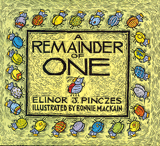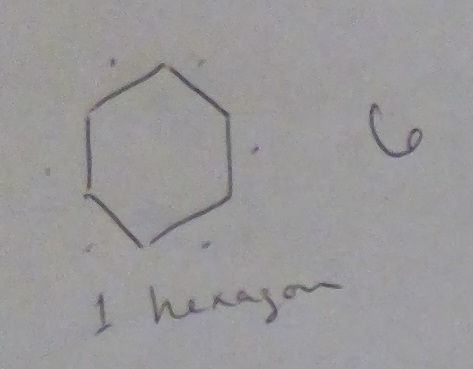Reading A Remainder of One
- Matt Felton-Koestler with Courtney Koestler
- Aug 11, 2017
- 3 min read

Parker and I recently read the book A Remainder of One by Elinor Pinczes and illustrated by Bonnie MacKain. In it there are 25 ants and they try to line up for a parade for the queen. They make two lines, and there's one ant left over (which the queen does not like!). So they try three lines and four lines, each time having one ant left over. Finally, they line up in five even lines.
We read this a little while ago, so I don't remember all the details of our conversations around the math, but there are so many questions that can be asked and explored. I could see using this book as the foundation for a number of lessons with kids, possibly returning to it multiple times to explore different questions.
One thing Parker and I explored was how many ants are in each row. Then I asked P how we could write a number sentence for that. For two rows P suggested "12 + 13." So I wrote that down. Then I asked how we could write it to show there are two rows that are the same and one left over, so we came up with "12 + 12 + 1". We did this for three rows too, but after that Parker lost interest and wanted to "just read." We talked about how these were all different names for the same amount (including "25"—"25" is just another name for this number).

Our Number Sentences "2×12 + 1" was mine, but I asked P if it made sense to write that way
This book could be used in a classroom in a similar way to rename other numbers. Children could get out blocks and explore how to arrange them in different numbers of rows and could write number sentences to match. My partner, Dr. Courtney Koestler, loves to begin work with kids by having them rename 24 (or 12 in lower grades) because they are friendly numbers with lots of factors. Recognizing that numbers have many names is incredibly important in mathematics. Many people in school learn the "borrowing" algorithm for subtracting shown below (it's now more commonly called "regrouping"). Basically, this involves renaming "25" as "10 + 15" or as "1 ten + 15 ones".

Regrouping Subtraction Algorithm
Later, renaming numbers will be important in thinking about multiplication, division, and factors. Another name for "24" is "6×8", so that means two of its factors are 6 and 8. Similarly, another name for "25" is "2×12 + 1"—thought of in another way this means that the answer to "25 ÷ 2" is "12 remainder 1". In algebra the idea that the same quantity has different names is the basis for solving equations. If children have any hope of understanding what the equation below means and what they are doing when they solve for x, then they need a strong foundation in understanding the equals sign as meaning "another name for" or "the same as."
2x + 3 = 15
Algebra—remember how fun that was? (I'll be sure to post about how algebra can be meaningful and child-centered in the future)
"Touchy Feely" vs. "Rigorous"?
Some people complain that child-centered math is too "touchy feely" and that it's not "rigorous" enough. But look at what's happening in the examples above—these are about deep mathematics. The thinking that's happening here underpins important mathematical work, including common algorithms, why multiplication and division work the way they do, and algebra. Being able to explain how numbers can be renamed and why that makes sense requires deeper and more flexible understanding than following the steps of an algorithm you memorized. Explaining and justifying is what mathematicians do—they're also the kinds of skills that matter in the real world (for jobs and for participating in a complex, democratic society). So, yes, it might look more "touchy feely" because kids are coming up with their own strategies and doing a lot of talking (instead of the teacher showing them the "correct" method—SPOILER: there's more than one correct method), but when done well, child-centered math is more rigorous than traditional, teacher-centered math.
Next Time
I wanted to do more of this kind of stuff (renaming 25 and arranging other numbers of blocks in different ways), but Parker wasn't overly interested and then I thought of another problem I've always wanted to do and P was excited when I said it came from a famous research article. I'll post about that next time.
In the future I'll try to post about a range of books, some that are obviously mathy like this one and others that are just fun books that we can still connect to math.
Question
Post a comment below—Have you read A Remainder of One? What are your favorite books to read with your child (or kids you work with)? Does math ever come up when you read?


Comments